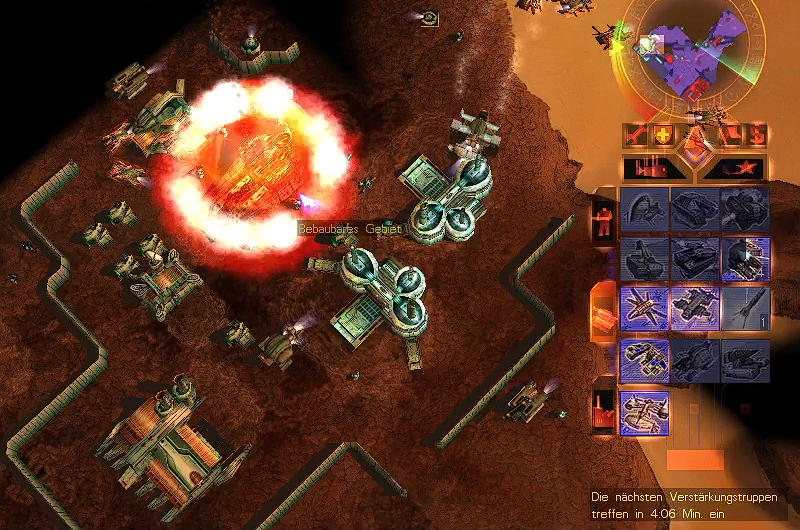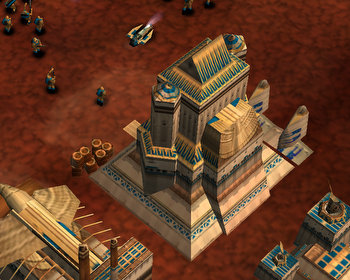Why Emperor Battle for Dune is not “replayable” well for me.
Real-time strategy earlier
Real-time strategy used to be one of my absolute favourite genres. It all started with Dune 2, first on the Amiga, later on the PC. At some point “Command & Conquer 1” was on a game magazine CD with a demo mission. I played through this mission countless times, for weeks, we had nothing.
I never bought the full version of C&C 1, because the successor “Red Alert” was in the shop at some point. This became the defining game of my youth. I played it up and down. I bought the mission CDs and played with or against each other on the network, sometimes all night long. Including the challenges of setting up network drivers under MS-DOS and reinstalling Windows 95 during the LAN party.
It was simply great fun to build a base, let the opponent run against it senselessly and then flatten him with a counter-attack.
Later, Dune 2000 joined in. That was OK, and was played a lot, but not as intensively. Command & Conquer 3, Tiberium Sun, marked the end of my real-time strategy. Somehow it was no longer my game and interest waned. With the first Half-Life and Quake, other genres took over and dominated the years.
Emperor: Batte for Dune
Many years later I discovered Emperor: Battle for Dune, also by Westwood. Published in 2001, I myself only discovered it a few years later. It is the sequel to the story of Dune 2, or Dune 2000. The graphics are all 3D and still nice to look at. With a little effort you can get “Emperor: Battle for Dune” to work in Windows 10 and 11.

There are the usual three houses, Harkonnen, Ordos and Atreides. These differ significantly here in appearance and units. This makes the individual campaigns much more interesting for each side. In earlier versions there were usually only one or two special units and the choice fell on the Harkonnen, because of superweapon and thick tanks.
The missions are also much more varied, as there are now also side missions and the planetary map also takes counter-attacks into account. I have played through the game countless times with fun. Until now
The opponent’s AI and simple strategy
Recently, I pulled the game off the shelf again, plugged in the USB DVD drive and installed the game. While the game was fun at first, I quickly established a routine.
Unfortunately, I have figured out the game by now. A major weakness of the opponent is base building. In the previous games, the computer had a ready-made base, whereas I had to build mine first. The base was developed by game designers, the computer did not have to “think” this up itself. As a rule, there were no major weaknesses, except for the deliberate backdoor, which often existed in Dune 2.

In Emperor, the computer usually also starts with a base, but first builds it up itself. If you disrupt the enemy early on, you have a good chance of a quick victory. In defence missions, it is often even easier to take the opponent by surprise. The latter starts with a mobile building station, which can be taken by surprise with a few quickly built units. In some cases, this also conveniently drove through my base and could thus be dealt with quickly. The idea that the computer also builds its base is not bad, but ensures that it does not have a very good base in the majority of cases.
Moreover, it is quite easy to get a lot of money at the beginning by clearing the scrapped collectors or other ruins with a few units. It is a boring routine to first drive around the map and collect the money, especially since the things always appear in the same places.
In addition, it is possible to clear the opponent with simple strategies. As soon as you get the attack helicopters as a Harkonne, the enemy construction yard can be quickly cleared out of the way. It becomes even easier later with death hands. First the death hand and then the attack helicopters. For Atreides and Ordos it is a bit more difficult, but there are strategies here too. Once the building production is gone, the rest is easy.

The only really interesting missions are those in which the enemy has an already established position, i.e. a base that has been built up by designers. Unfortunately, this takes the fun out of the game for me, the game and the enemy AI are figured out and instead of comfortably building up the base, it is more effective to flatten the enemy as quickly as possible right at the beginning.
Conclusion
It’s not that I don’t enjoy the game at all anymore, but the weaknesses of the AI are disappointingly evident. On top of that, every map elicits an “oh well, I know that” from me. A lot is routine, like collecting money at the beginning, then building the right buildings, the right units and then robbing the computer of its existence in one fell swoop.
I know where the enemy is and I know how to finish him off quickly. The most fun or challenge is the last mission, although here the fun is diminished by a time limit.
Nevertheless, it was and is a great game, and for those who haven’t played it yet, I still recommend it. CDs are occasionally available on Amazon, otherwise eBay.





